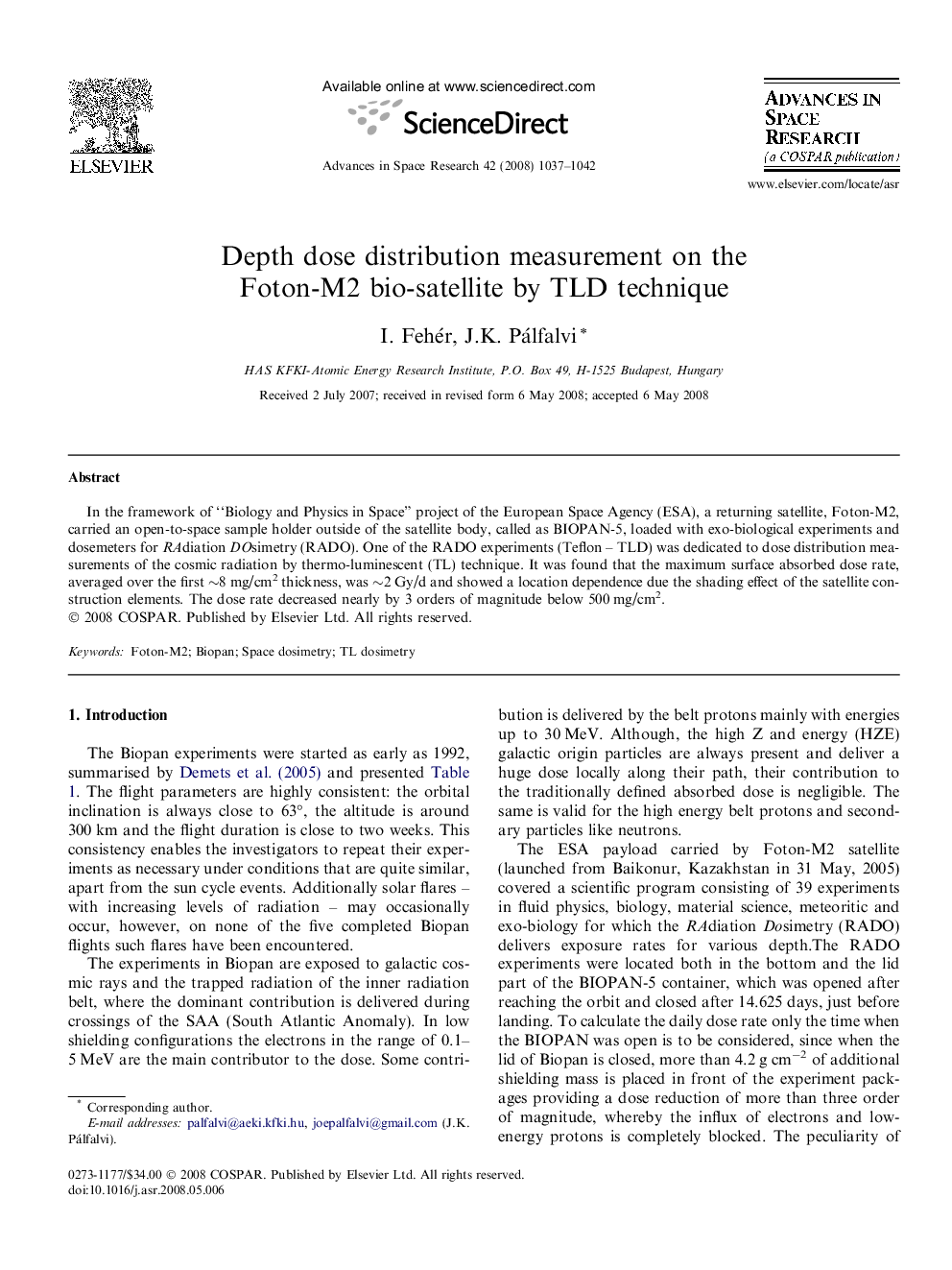| Article ID | Journal | Published Year | Pages | File Type |
|---|---|---|---|---|
| 1766137 | Advances in Space Research | 2008 | 6 Pages |
Abstract
In the framework of “Biology and Physics in Space” project of the European Space Agency (ESA), a returning satellite, Foton-M2, carried an open-to-space sample holder outside of the satellite body, called as BIOPAN-5, loaded with exo-biological experiments and dosemeters for RAdiation DOsimetry (RADO). One of the RADO experiments (Teflon - TLD) was dedicated to dose distribution measurements of the cosmic radiation by thermo-luminescent (TL) technique. It was found that the maximum surface absorbed dose rate, averaged over the first â¼8Â mg/cm2 thickness, was â¼2Â Gy/d and showed a location dependence due the shading effect of the satellite construction elements. The dose rate decreased nearly by 3 orders of magnitude below 500Â mg/cm2.
Keywords
Related Topics
Physical Sciences and Engineering
Earth and Planetary Sciences
Space and Planetary Science
Authors
I. Fehér, J.K. Pálfalvi,
